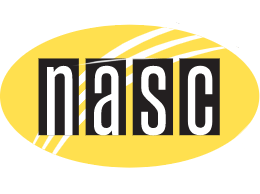The Best Dog Training Treats

Whether you have a brand new puppy or an older dog, you need training treats! Even senior dogs need to be mentally stimulated and keep learning new things.
Using training treats as a reward is one of the easiest ways to train your dog. When your dog does something you like, you mark it with either a sound (like a clicker) or a verbal cue (like the word “yes”), and then you quickly give him a treat. Your dog learns the behavior earns him good stuff so he wants to repeat it.
RELATED: 4 Simple games to get started with clicker training ...
What Are The Best Dog Training Treats?
There are so many treat options out there, and lots of poor quality ones you’ll want to avoid. This guide will teach you what to look for in training treats.
Ingredients To Avoid In Dog Training Treats
As a general rule, the fewer ingredients in your dog treats, the better. Ideally, you should be able to flip over your bag of treats and understand all of the ingredients listed. Here are a few ingredients you want to avoid.
Preservatives
Avoid treats with preservatives like BHA, BHT, and Ethoxyquin. These are chemical preservatives used for longer shelf life. Unfortunately, studies have also shown they are all carcinogenic (cancer-causing). BHA can cause stomach cancer, BHT can cause thyroid cancer, and ethoxyquin can cause kidney and urinary cancer (1).
Ethoxyquin is a sneaky ingredient that’s most often used to preserve fish meals. It's also used to preserve other fats like beef or chicken. It is rare that you will ever see it listed on your ingredient list, but that doesn’t mean it isn’t there…
The FDA doesn’t require preservatives added to raw materials to be included on the ingredient list. Because ingredient suppliers add ethoxyquin into fish meal before selling it, pet food and treat manufacturers don’t have to disclose it on the label. The best way to find out is to call the manufacturers … or just avoid those ingredients.
Propylene Glycol
Propylene glycol is used to preserve moisture. It’s a derivative of antifreeze and can cause central nervous system toxicity, seizures and anemia.
Artificial Colors
First, any sort of dye or coloring in a dog treat is completely unnecessary. Treats have color added to entice humans to buy a product. Your dog doesn’t care about the color. Artificial dyes can increase inflammation in the body, and can cause tumor growth or behavioral issues like hyperactivity.
Sweeteners
Avoid treats with sugary ingredients like high fructose corn syrup, glucose, cane sugar or molasses. Avoid any ingredient ending in “-ose” or “-ol.” Many so-called “healthy” treats may be lower in fat but instead have sugars high on the ingredient list. These sweeteners also function as palatants to make food more appealing to your dog. Your dog doesn’t need sugar in his treats. High fructose corn syrup has been linked to metabolic disorders and obesity. All sweeteners can disrupt gut health.
Glycerin
Glycerin is a sugar alcohol that’s used for flavor and food coloring, as well as a sweetener. It’s often used in soft treats because it helps keep them moist. Even vegetable glycerin can be a byproduct of soap manufacturing. But safety studies about glycerin for dogs are lacking, … and it may cause digestive problems because it can’t be fully absorbed by the body.
RELATED: Read more about the problems with glycerin for dogs …
Natural Flavor
Natural flavor (even things like “natural bacon flavor” or “natural smoke flavor” on ingredient lists is usually anything but natural. Natural flavor is often MSG or animal digest, both of which are low quality, potentially unsafe ingredients for your dog.
Grains And Carbohydrates
Your dog does not have a biological need for carbohydrates. It’s best to avoid them completely for your dog, and stick with meat-only treats. A freeze-dried, dehydrated or air-dried treat is your best bet to avoid starches and sugars.
Avoid Most Soft Dog Training Treats
Unless your dog loves soft treats and doesn’t get excited about healthier options, a lot of soft dog training treats have undesirable ingredients, like some of those listed earlier. Soft treats often have starchy ingredients and fillers, sweeteners, preservatives, propylene glycol, natural flavors, artificial colors, fillers (like cellulose), or glycerin.
If you want to use soft dog training treats, choose the ones with the shortest ingredient lists containing recognizable, real food ingredients, and avoid the ingredients discussed earlier.
How To Pick The Best Dog Training Treats
Local pet boutiques and retailers will usually have the best array of high-quality training treat choices for your pup. Most of them will even have samples for your dog to taste-test.
In addition to the earlier list of ingredients to avoid, there are some other important things that are often overlooked when searching for training treats:
- Texture. You want treats that don’t crumble too easily, so they’ll hold up in a treat pouch or pocket.
- High Value. Pick treats that your dog really loves, to motivate him to learn new or more difficult behaviors.
- Size. Treats should be small enough that you can give your dog several in a row without making him feel full. Ideally, this means your treats should be pea-sized or smaller. You can either buy treats branded specifically for training or break up regular treats into smaller pieces before feeding them.
The Best Dog Treats For Training Puppies
The best dog treats for training puppies are real food … something like cooked chicken breast (with no bones). Shred it up into small pieces and treat away! If you use a training pouch to hold your treats, place the chicken into a plastic or silicone bag inside the pouch. If your pup has chicken sensitivities, you can use any cooked meat cut into tiny pieces.
Sometimes you need the convenience of a more shelf-stable treat, and then you’ll want to buy pre-made training treat or make your own (read on for help with this).
A Note About Puppies: If you’re giving your puppy lots of treats or doing a long training session, you may want to consider a balanced, freeze-dried, air-dried or dehydrated food as a puppy training treat.
There are several brands that make balanced foods in convenient treat-like pieces or “niblets.”
The Best Dog Training Treats for Dogs With Allergies
Single-ingredient, unique protein treats are the best option for dogs with sensitivities or allergies. Avoid biscuits or soft treats and stick to limited ingredient meat treats. You’ll want to pick a protein that your dog tolerates well.
Again, freeze-dried, air-dried or dehydrated single ingredient treats are a good option.
Dog Training Treats On Amazon
In all likelihood, you’ve looked for dog treats on Amazon and realized there are a ton of options out there. Figuring out which ones are okay and which ones might be best to avoid can be overwhelming. You’ll need to read ingredient labels and follow the guidelines above about ingredients to avoid and treat types to look for.
Some of the best training treat options available on Amazon are single ingredient meat or organ meat treats, whether freeze-dried, dehydrated or air dried.
How To Make Your Own Dog Training Treats
Dehydrating things like organs and muscle meats from your local grocery store or butcher shop is a great way to make your own healthy dog training treats. A food dehydrator is the easiest way to do this, but if you don’t have a dehydrator, you can use your oven instead.
Simply cut up your desired meat into ¼” thick pieces and place on a baking sheet. Parchment can stop the treats sticking to the sheet as they dry.
Bake for several hours on your oven’s lowest setting until the meat dries out. With this process, you are likely to get a jerky texture to your treats, so you’ll want to further break up the treats to make sure they aren’t a choking hazard for your dog.
Or you can try making a baked treat and cutting it into small pieces. These won’t last as long as store-bought dog treats, so be careful to store them properly and use them up within a couple of weeks.
Play around with ingredients like eggs, pumpkin purée and pumpkin powder, chia seeds, green leafy veggies, salmon, and coconut flour, so you can avoid grains and other starchy ingredients.
Mix It Up
Overall, mixing up your dog’s treats is a great way to get some variety into his diet. Try to rotate through brands, proteins and types of treats as much as possible to keep your dog excited about his treats.
References:
- Ito N ,et al. Carcinogenicity and modification of the carcinogenic response by BHA, BHT, and other antioxidants. Crit Rev Toxicol. 1985;15(2):109-50.




